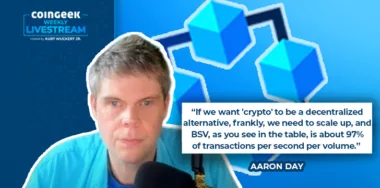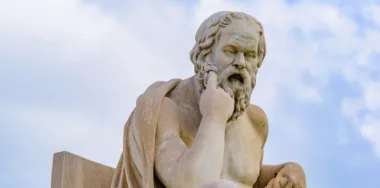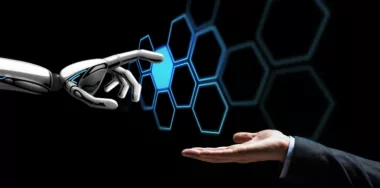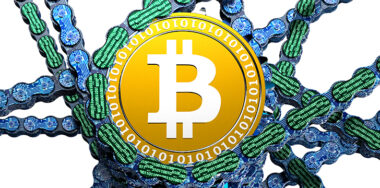This past weekend, Dr. Craig Wright appeared on Channel 10’s The Project, a nightly current affairs and news program broadcast in his native Australia. The show, which aims to “join the conversations going on in living rooms around the country,” featured a segment by host Hamish Macdonald that attempted to solve the ‘mystery’ of who is Satoshi Nakamoto.
For regular readers of CoinGeek, as well as ill-fated litigants who have tried to deny the truth and re-write history, that mystery has long since been solved. But for some of those in the wider public domain—particularly those that have been exposed to the endless propaganda of the small-block crime cartel—solving exactly who created Bitcoin remains one of the most intriguing (though altogether pointless) riddles of the 21st century.
Failing to prepare is preparing to fail
Had Macdonald done his homework before the interview, he would have known that the identity of Satoshi Nakamoto has long-since been established in the courts on two different continents and could have himself checked the mountain of evidence filed in those cases that support Dr. Wright’s contentions. But alas, an expectation for a journalist to do a modicum of their own research prior to speaking with one of the greatest minds—and one of the most impactful people—of the last 100 years was evidently too much to ask for. Instead, viewers endured an opening allegory that set the scene for Macdonald’s detective work, introducing Dr. Wright as an “Australian computer scientist” who claimed to be the “real Satoshi,” adding in as a footnote a brief mention of the doxing he endured at the hands of Wired and Gizmodo.
But thankfully, none of this is anything that Dr. Wright hasn’t seen before, patiently guiding Macdonald through his life story from leaving the Australian Stock Exchange, through to creating Bitcoin and now working as the Chief Scientist for blockchain conglomerate nChain—along with the 27 degrees he has accumulated along the way.
To his credit, Macdonald showed that he’d at least read the first line of the Bitcoin white paper when he asked whether the “intention originally [for Bitcoin] was to be this thing that was ripe for speculative behavior.” Dr. Wright explained to Macdonald that “unfortunately whenever you get people involved there’s always someone who will try and create a Ponzi out of it. [Bitcoin is] designed to be used as a micropayment system, first and foremost.” The key word in that statement: used. But that original vision for Bitcoin (operating under the BTC ticker symbol), to exist as a peer-to-peer system of electronic cash—which is literally in the title of the white paper – was maligned by rogue developers, who forked the original code to instead change Bitcoin into a digital asset useful for nothing except speculation—too slow, too expensive and too cumbersome for micropayments, or really, any payment.
Of course, Dr. Wright’s original vision for Bitcoin does live on, just (for the time being) under an alternate ticker symbol—BSV—a fact either lost on Macdonald or not befitting of the narrative he was trying to construct. This is perhaps why Macdonald seemed perplexed when Dr. Wright made a bold prediction (albeit not one that will be new to loyal CoinGeek readers) for the impact his technology will have on the existing tech bourgeoise:
“The Silicon Valley companies will change drastically,” said Dr. Wright. “Facebook, Google, others, probably won’t exist. I mean, this is why Jack Dorsey, Mark Zuckerberg and all the rest, [this is] why they’re suing me.”
Dr. Wright is of course referring to the impending lawsuit brought against him by COPA—the so-called Crypto Open Patent Alliance—who are seeking to invalidate his copyright ownership of the Bitcoin white paper that is synonymous with him (despite the U.K. high court already affirming Dr. Wrights authorship and ownership of the white paper). But predictably, our ill-prepared interviewer failed to dig into this revelation at all, not noting how COPA is already running scared and delaying proceedings to 2024, nor delving into the reasons motivating such a personal attack by big business on a quiet man who just wants to get on with building technology for the world. No, instead, Macdonald followed up by asking Dr. Wright about the extent of his personal wealth.
Unbelievable.
Doctor Dimwit
The segment also featured Dr. Eric Lim, a Senior Lecturer at the University of New South Wales Sydney’s School of Information Systems and Technology Management, who also founded the UNSW Crypto Clinic. Dr. Lim expressed his doubt about the veracity of Dr. Wright’s claim to the Satoshi Nakamoto moniker, but lacked the mettle to make a firm assessment either way, citing “threats of legal lawsuits” received by “anyone who has, kind of like, disputed his claims.” This of course demonstrates a firm lack of understanding (a recurring theme with this interviewee) about the objectives of Dr. Wright’s cases, which have been pursued solely to protect his legacy as the creator of Bitcoin, as Ira Kleiman, Cøbra and Peter McCormack have all learned the hard way.
But that wasn’t the only area in which Dr. Lim demonstrated a fundamental lack of understanding about Bitcoin, despite purporting to teach university students on the subject (and appearing in the segment for little more than a minute in total).
Dr. Lim uttered the oft-repeated, yet thoroughly debunked, trope that the only way for Dr. Wright to prove that he is Satoshi Nakamoto is to move the Bitcoin that he mined in the early days of the digital currency, saying “if you are not able to move any of those coins in those accounts, you can claim all you want, right? It doesn’t matter. You can take a picture of yourself in front of a Lamborghini, it doesn’t make it yours.” The great irony of his statement, as Dr. Wright would go on to explain, is that in the second part, Dr. Lim was very almost correct: possessing a photograph of a Lamborghini, or even the keys to drive it, of course does not convey ownership rights nor prove who actually is the rightful owner. Nobody would try to apply such flawed logic to the physical world, so why is it any different in the digital world?
Dr. Lim continued to exhibit a flawed understanding of the workings of Bitcoin, when he said, “move the coins and you can prove that you are the owner of that account. And if you, despite whatever reasons, choose not to, then your claims will remain as just claims.” Unfortunately for both Dr. Wright’s sanity and the interests of the viewing public, it was a thread that Macdonald opted to echo in the interview, drawing a sharp rebuke from Bitcoin’s creator.
“Again, you can’t prove with keys. If I own your car keys, that doesn’t prove I own your car. So, I mean, honestly, that’s the stupidest thing I’ve ever heard,” said Dr. Wright.
“Read evidence law. Pick up a law book, look [[at] what proof is and do a course. And when you come back and you actually know what the f**k you’re talking about, we can have a discussion. Otherwise, you’re just being a wanker.”
At that stage, it was abundantly clear that Dr. Wright’s patience had reached its limits with the uneducated and belligerent question line posed to him by Macdonald. The segment wrapped up shortly after—and to the detriment of audience – before Dr. Wright had the opportunity to educate Macdonald about the fallacies he was all too happy to repeat—though whether Dr. Wright would have had the requisite patience and willingness to do so after enduring such ineptitude is unclear.
But in case you’re reading this, Hamish or Eric, allow me to link you through to a thorough explanation of why keys do not equal identity from Satoshi Nakamoto himself. But given that it appears that neither of you have even bothered to read Dr. Wright’s white paper before going on national television to discuss Bitcoin, I won’t be holding my breath.
Perhaps unsurprisingly given how he developed the narrative throughout the episode—one that seemed largely pre-determined before ever speaking to Dr. Wright (behavior akin to malpractice in the world of journalism)—Macdonald reached no firm conclusions as to who he determined Satoshi Nakamoto to be. Rather than having the courage to make a decisive call after the segment aired—particularly one that would threaten the propaganda-induced groupthink that goes hand-in-hand with any discussion of Satoshi’s identity—Macdonald and his fellow presenters instead proceeded to make snide remarks at Dr. Wright’s expense, injecting low-brow attempts at humor that likely says as much about their target audience as it does about themselves.
But unlike Macdonald, based on the episode, I would be willing to draw a firm conclusion. Not that Dr. Wright is Satoshi Nakamoto—that much is obvious already—but rather, that history will not be kind to Macdonald and his ilk for their absence of journalistic ethics, complete lack of compunction and unmuted mockery of the greatest Australian export since Sir Donald Bradman.
Shame on you, Channel 10.
New to blockchain? Check out CoinGeek’s Blockchain for Beginners section, the ultimate resource guide to learn more about blockchain technology.








